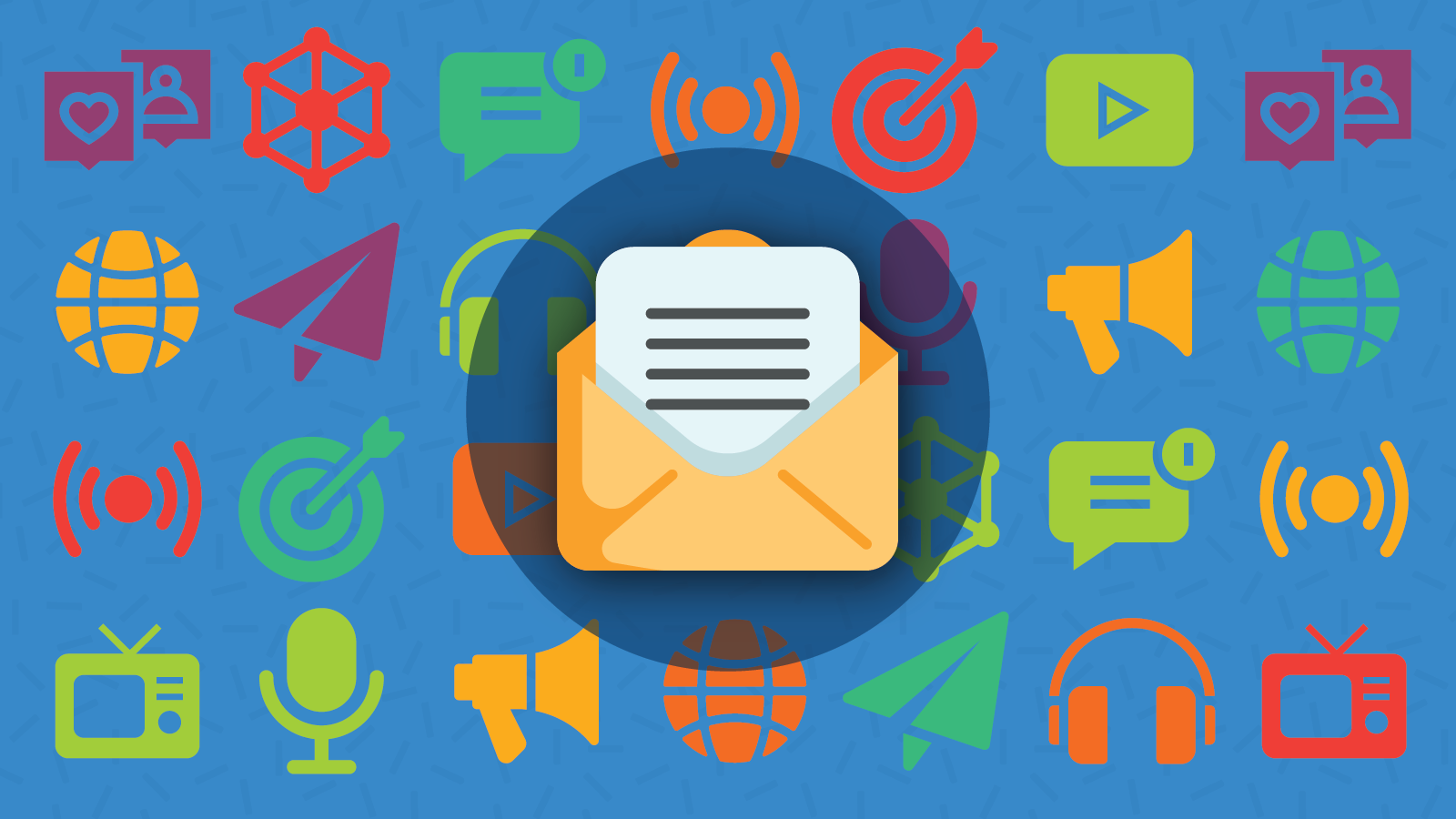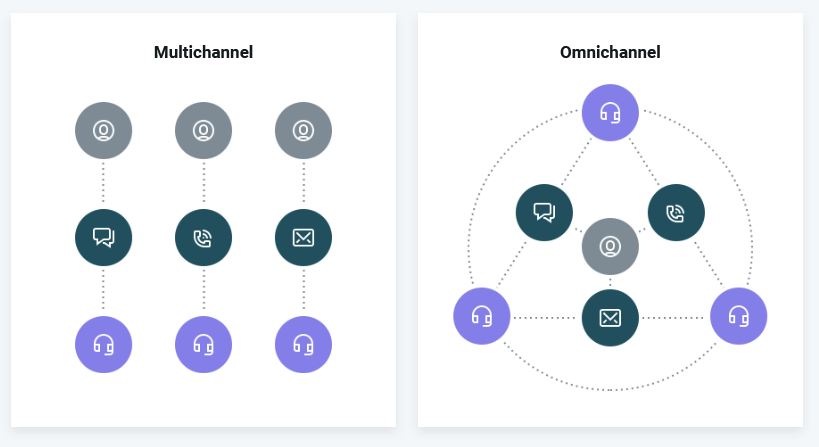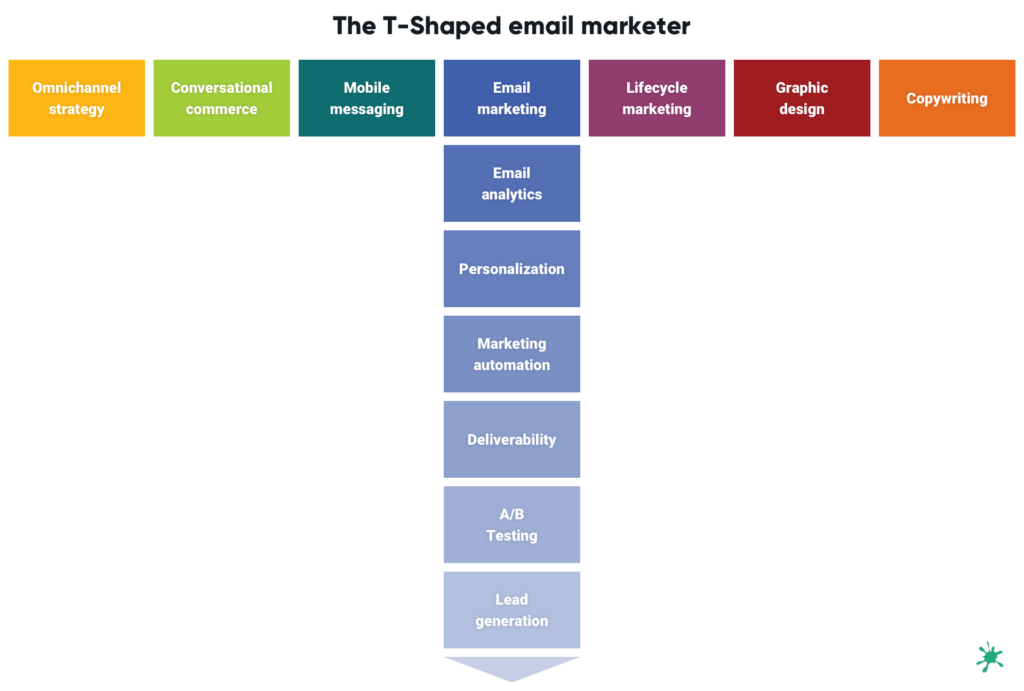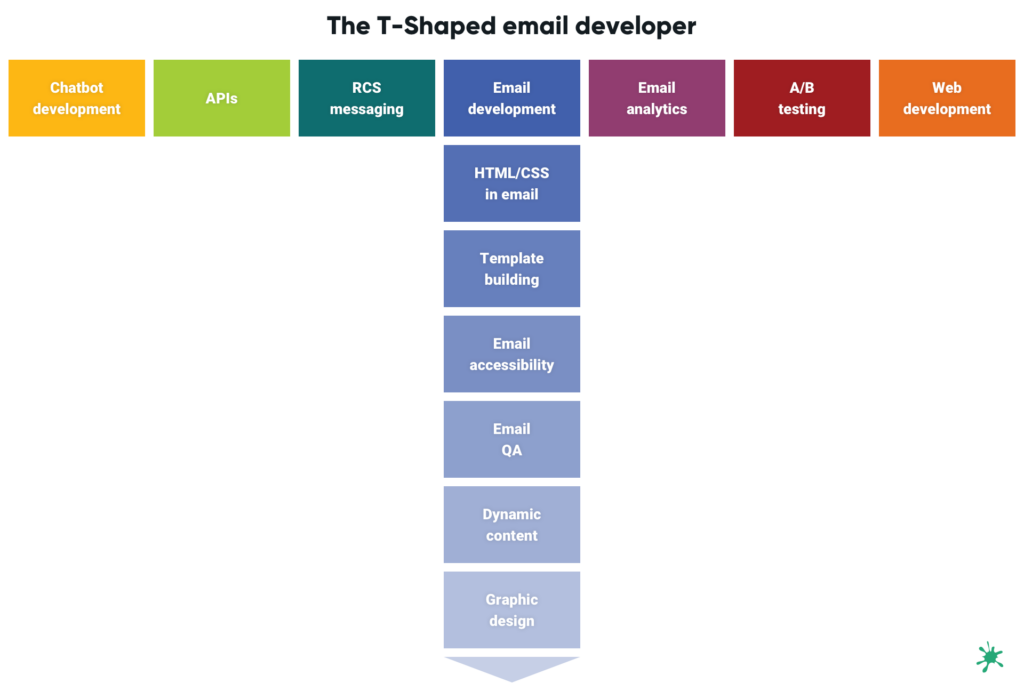Industry News
Email Marketing Jobs: Should You Diversify Your Skill Set?

Industry News

Do you think email marketing jobs are future-proof?
Far be it from us to proclaim that email is dead or even dying out. However, things are constantly changing in the worlds of marketing, technology and customer communications. It’s worth asking how email fits into the bigger picture.
Will your email marketing skills always be needed, or should you think about diversifying your skill set to prepare yourself for the changes ahead?
Remember the ‘90s? That’s when email reigned supreme as the king of digital communication. Sure, there was instant messaging too. But when it came to hearing directly from brands, email has almost always been a top digital marketing channel.
Over the years, the importance of email has grown. People use email addresses as a form of online identification. Our inboxes contain everything from appointment reminders and renewal notices to product recommendations and customer satisfaction surveys.
Demand for email marketers has grown over the years as well. As of this writing, there are more than 70,000 open email marketing-related jobs posted on LinkedIn.
But email is no longer the only player in the game of customer communication. Other channels can fulfill many of the same functions that certain types of emails provide. And we sort of hate to say it but, sometimes people actually prefer those channels over email.
Here are a few examples:
By this point, we’ve all become familiar with text messages that confirm purchases, provide two-factor authentication, notify us of potential bank fraud, and more. SMS (Simple Messaging Service) can cover a lot of the same needs as certain transactional emails.
MMS (Multimedia Messaging Service) takes it a step further, delivering images, audio, and short videos to smartphones. That makes MMS an interesting marketing channel for many brands.
RCS (Rich Communication Services) is even more robust. Imagine the most impressive interactive email you could possibly develop. While RCS is only supported on Android devices at this time, it allows for things like high-resolution media, video calls, and payments.
The Google Blog shows how brands like Subway have used RCS for marketing efforts such as delivering digital coupons.
Social media and messaging apps are part of the communication and marketing mix now as well. Brands that are on the cutting edge of customer communications are using messaging apps to inform, engage, and even sell.
It’s called conversational commerce, and it’s like getting personalized emails in the form of automated conversations that happen in real-time. The channels on which this is taking place include:
Remember how crazy it sounded when Domino’s let you order a pizza on Facebook Messenger? That was just the beginning.
The artificial intelligence (AI) that’s powering conversational commerce often comes in the form of customized chatbots. Brands program them to answer common questions, make product recommendations, and more – all while sounding like a real human being thanks to natural language processing (NLP).
Chatbots can be deployed in messaging apps, on a website, or they can be integrated into an in-app user experience. They’re often used as an alternative to live support agents, but they can also pass people along to a real person for help when needed.
A chatbot will almost immediately respond to customers 24/7 too. That’s much better than waiting on hold forever or waiting through the weekend for customer service to return an email.
When brands engage with customers on a variety of channels, and those conversations can continue from channel to channel while retaining context, that’s what’s called omnichannel communication. Unlike a multichannel approach where communication is siloed, an omnichannel strategy integrates everything into a connected experience.

But will omnichannel lead to email’s downfall and a reduction in email marketing jobs? Not likely.
Email is poised to play a significant part in this evolution in customer communication. For one thing, as it stands today, email is an indispensable channel. It’s pretty darn impossible to conduct business of any kind without email.
Surveys and industry studies regularly cite email as one of the most effective marketing channels with the highest return on investment. A 2016 study from Bluecore found consumers in all generations preferred email and call it the most personal channel. According to a MarketingSherpa survey, 61% of consumers want to receive promotional emails on a weekly basis.
Facts and findings like these make it clear why companies building omnichannel communication platforms are acquiring companies that provide email solutions.
Still, does any of this let us assume that email marketing jobs are 100% safe? The truth is, there are some things that will help to ensure that email retains its relevance.
Here are three ways email can adapt to an omnichannel world:
Those are some ways that email itself can improve as the digital communication landscape transforms. But what about those of us with email marketing jobs? What can we do to stay in demand?
What if Blockbuster had seen the changes in movie rentals coming? They could have jumped on the opportunity to become Netflix before Netflix did (or at least become a streaming competitor). Instead, there’s only one Blockbuster video store left in the world, and you can watch a documentary about it… on Netflix.
What if railroads in the U.S. thought of themselves as transportation companies and saw the rise of airplanes and trucks as legitimate ways to move people and products?
Maybe you’ve heard that Kodak pioneered digital photography, which is the technology that contributed to the film and camera company’s eventual bankruptcy. They were stuck in their ways, resistant to change, and just didn’t see the value in it.
The same kinds of mistakes that corporations make can be made by individuals. So, how do you avoid becoming Kodak or Blockbuster?
Author/speaker Simon Sinek is known for helping organizations and people “find their why.” Basically, that means going deeper than what you do and how you do it and identifying the purpose behind what you do. Your “why” us about what you believe.
While there’s nothing wrong with loving email as a marketing channel and being a proud email geek, it’s smart to think about what’s at the core of email marketing jobs.
Most email marketers believe in the power of timely, relevant, personalized, and meaningful messages that connect people with brands in helpful ways. You’re not just an email marketer or an email developer, you are a “customer communications expert.”
The mantra of the email marketing industry is “deliver the right message, to the right person, at the right time.” Maybe it’s time to add another layer to that mantra…
Deliver the right message, to the right person, at the right time, on the right channel.
The “right channel” is the one that the customer prefers and is ideal for communication in certain situations. It’s not about one channel being better. There are no winners and losers. Email is not in competition with SMS or any other form of digital communication.
It’s about doing what’s right for the people on the receiving end of your messages.
So, while we’re not saying that email marketing jobs are in jeopardy, this could be a good time to diversify your skills as a “customer communications expert.”
What makes someone a valuable marketer? Is it the person who’s a Jack of all trades, or is it someone with deep mastery in a certain area? It turns out, it’s a little of both.
A T-shaped employee is someone with in-depth knowledge in one area and working knowledge (or at least an interest) in related areas. It makes you more valuable to your team, and it can also lead to new opportunities for career advancement.
A T-shaped email marketer can come up with an excellent strategy that includes automation, personalization, and campaign optimization through A/B testing. They also understand graphic design and copywriting best practices.
Plus, T-shaped email marketers could diversify their skills by learning about marketing strategies for mobile messaging or exploring the way conversational commerce can be applied to different communication channels.

A T-shaped email developer will know a lot about how to code for the inbox and understand how to build an engaging, accessible email that renders appropriately in all email clients. They may also dabble in things like web development and analyzing email marketing metrics.
Plus, T-shaped email developers could diversify their skills by learning about how to code RCS messages or figuring out what goes into building a customized chatbot.

If you’re fortunate enough to work for a company that encourages continuous learning, take advantage of the opportunity to expand your horizons. Watch for content on places like LinkedIn Learning, stay up to date on trends, and ask questions in community forums.
If you’re ready to start learning and diversifying, here’s some content to explore:
For developers:
For marketers:
Want to find out more about an omnichannel approach, how to incorporate it into your strategy, and where email fits in the picture?
Our friends at Sinch Mailjet put together an ebook that takes a deeper dive into omnichannel communications. The free ebook also explores how to use a powerful storytelling technique to make your strategy really resonate with customers and subscribers.
Find out what Star Wars and Harry Potter can teach us about developing a customer experience that guides people along a path to purchase. Head over to Mailjet and download your free copy of “The omnichannel journey” right now and learn how to align customer communication with the right story.

